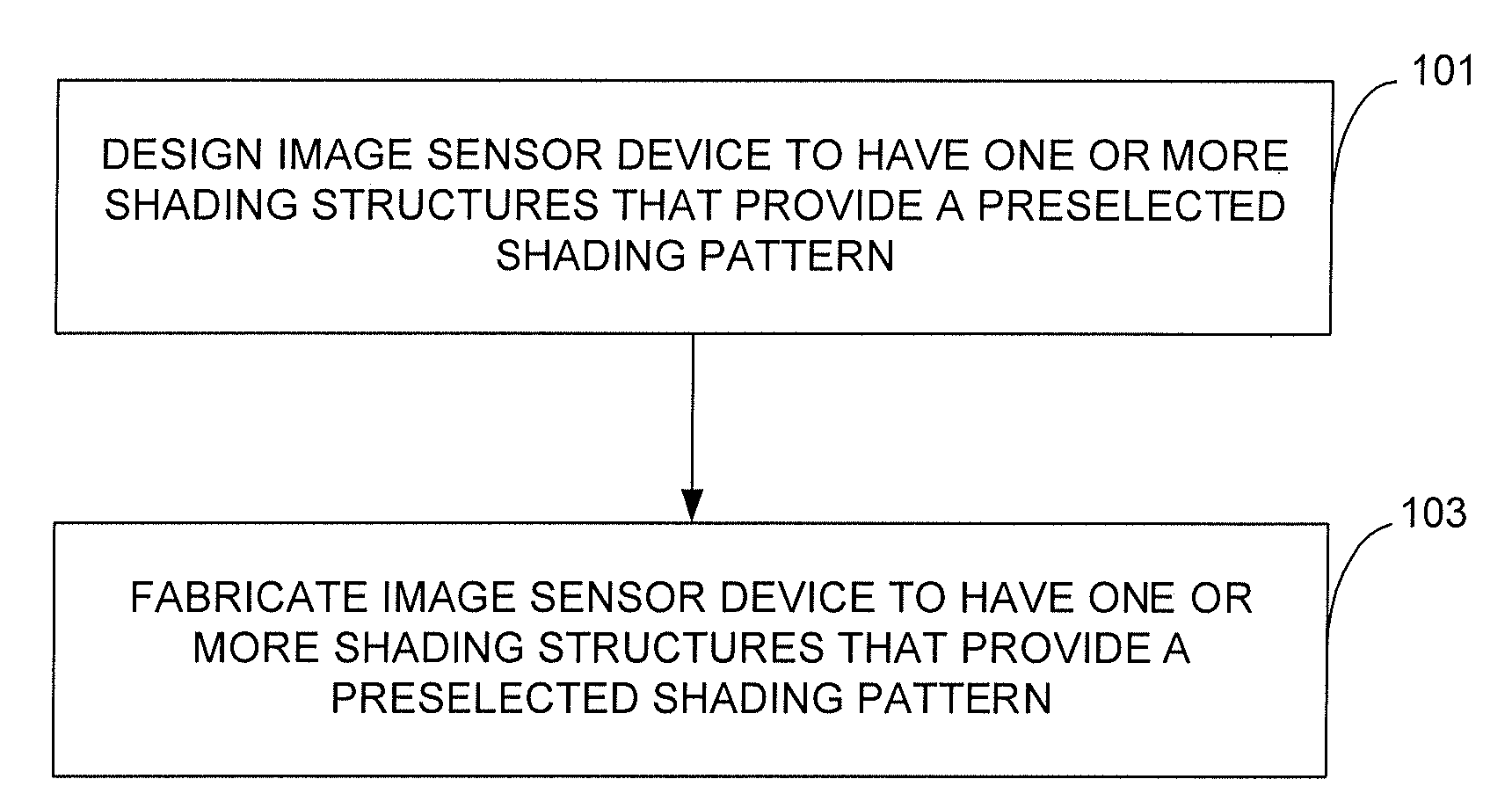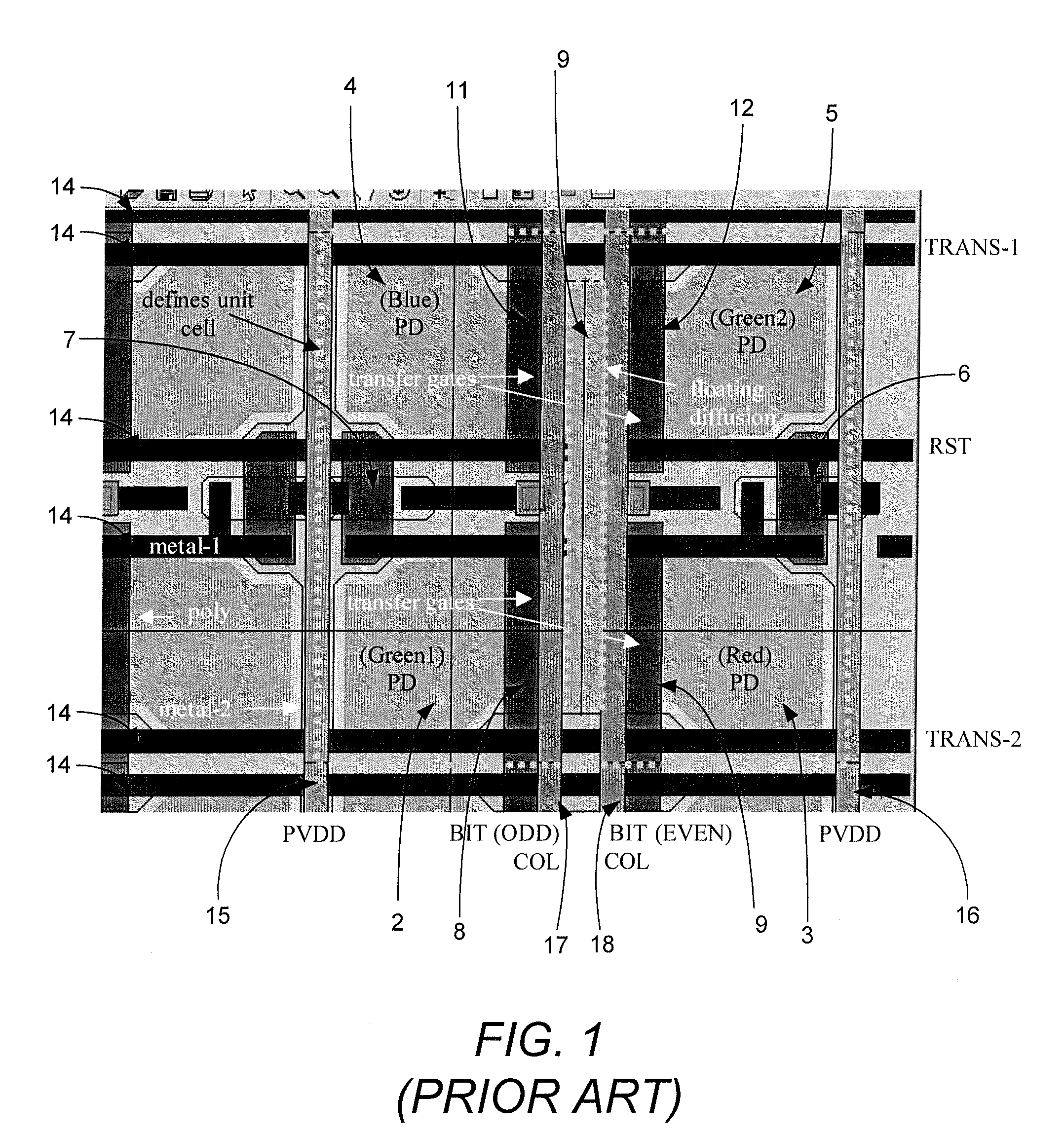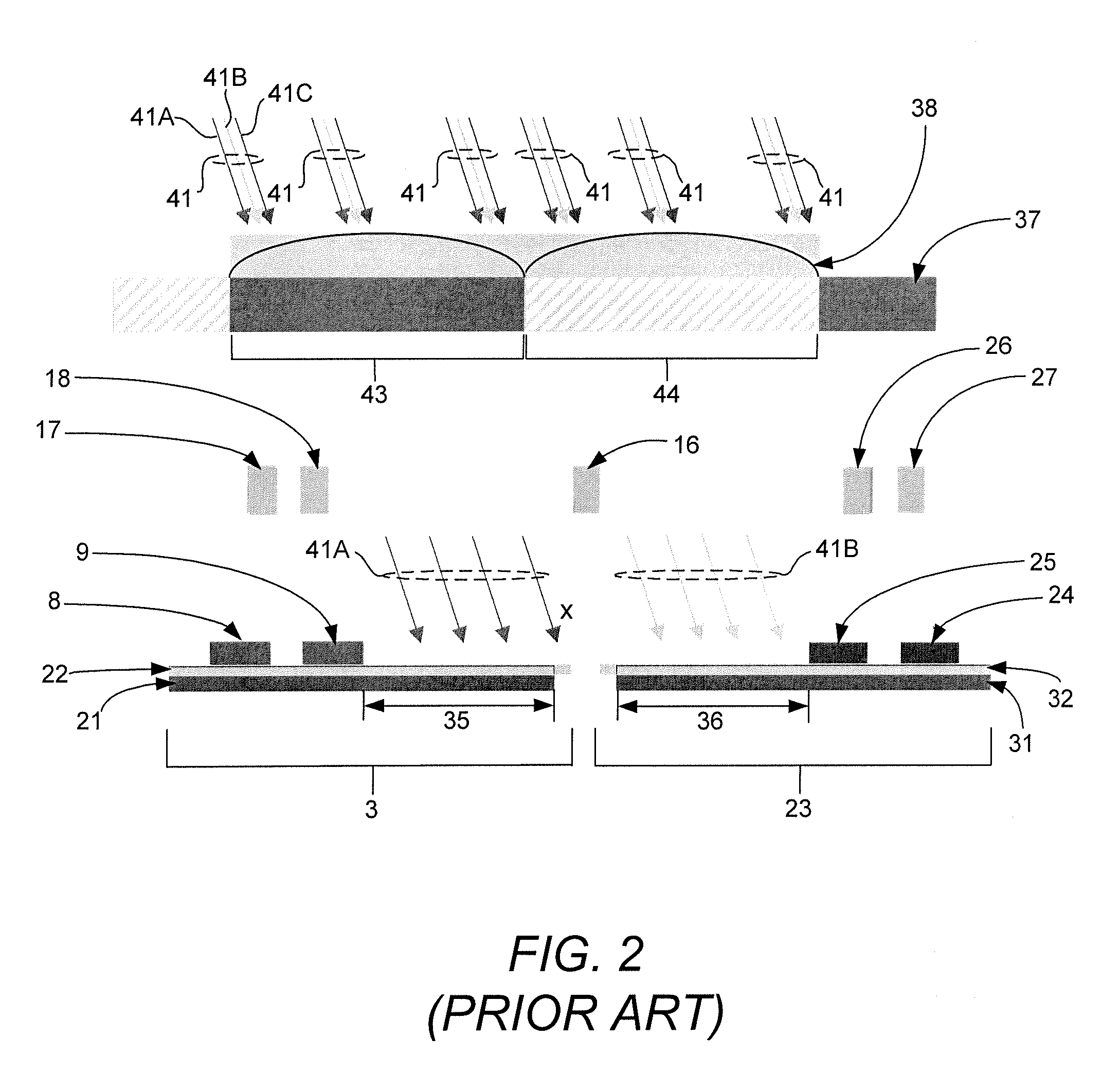Method and apparatus for preventing or reducing color cross-talk between adjacent pixels in an image sensor device
a color cross-talk and image sensor technology, applied in the direction of radio frequency controlled devices, instruments, semiconductor devices, etc., can solve the problems of color cross-talk between adjacent pixels, more pronounced hue artifacts in the image, and artifacts in the final output image produced, so as to prevent or reduce the effect of reducing the occurrence of artifacts
- Summary
- Abstract
- Description
- Claims
- Application Information
AI Technical Summary
Benefits of technology
Problems solved by technology
Method used
Image
Examples
Embodiment Construction
[0019]In accordance with the invention, one or more shading structures are used in the image sensor device to compensate for the non-normal angle of the incident light ray bundle, thereby making the angular response of the pixels more symmetrical. By making the angular response of the pixels more symmetrical, color cross-talk between adjacent pixels can be eliminated, or at least reduced. Making the angular responses of the pixels more symmetrical also eliminates or reduces the possibility of artifacts occurring in the output image of the image sensor device.
[0020]The structures that are used to make the angular response of the pixels more symmetrical include, for example, shading structures that are introduced into, or already existing in, the image sensor device that provide shading of light to control the locations at which light impinges on the photodiode area. The shading structures may have any number of shapes, including, but not limited to, slabs, stubs, square rings, circul...
PUM
 Login to View More
Login to View More Abstract
Description
Claims
Application Information
 Login to View More
Login to View More - R&D
- Intellectual Property
- Life Sciences
- Materials
- Tech Scout
- Unparalleled Data Quality
- Higher Quality Content
- 60% Fewer Hallucinations
Browse by: Latest US Patents, China's latest patents, Technical Efficacy Thesaurus, Application Domain, Technology Topic, Popular Technical Reports.
© 2025 PatSnap. All rights reserved.Legal|Privacy policy|Modern Slavery Act Transparency Statement|Sitemap|About US| Contact US: help@patsnap.com



